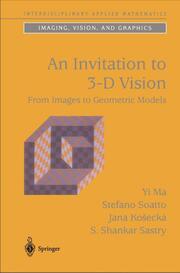Detailansicht
An Invitation to 3-D Vision
From Images to Geometric Models, Interdisciplinary Applied Mathematics 26
Ma, Yi/Soatto, Stefano/Kosecká, Jana et al
ISBN/EAN: 9780387008936
Umbreit-Nr.: 421089
Sprache:
Englisch
Umfang: xx, 528 S.
Format in cm: 2.9 x 24.3 x 16.2
Einband:
gebundenes Buch
Erschienen am 14.11.2003
Auflage: 1/2005
€ 106,99
(inklusive MwSt.)
Nachfragen
